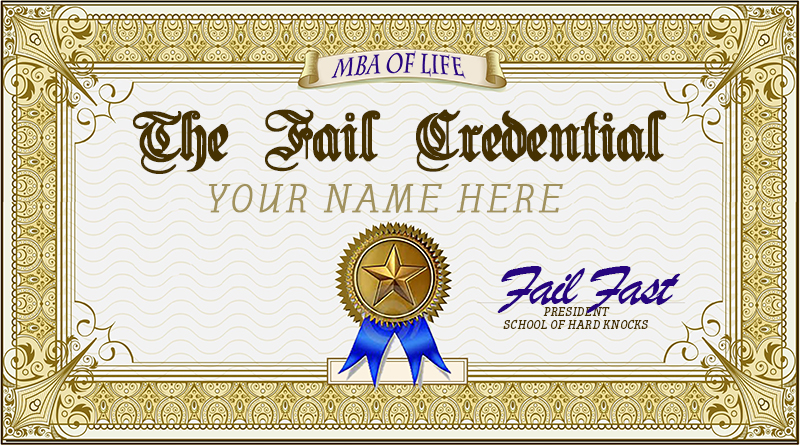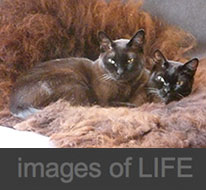THE FAIL CREDENTIAL

There is a fine line between failing as a ‘credential’ or as an ‘excuse’!
No excuses in this post which I wrote about a start up “fail” of mine “Is there such a thing as successful fail ?”
What is a fail credential?
I first heard ‘fail’ used as a credential, when my start up co-founder Alex was in the process of hiring a very accomplished individual of twenty-two to be part of our initial team. On paper he was quite amazing; everything he had done was very successful, and he had done more than you’d think possible at twenty-two! But Alex was still hesitant, and told me why: the applicant did not have any “fail credentials”, translated: he had never failed and recovered, so how was he going to handle the roller coaster downside of a startup?
Fail a dirty word
Traditionally and until quite recently ‘fail’ has been considered a dirty word. Something to avoid discussing at all costs, especially if you have had the bad luck to fail!
Fear of failing
We’ve all known people who use the excuse of failing, to not try again, or to not try at all! This happens to both those who have failed, and those who have the fear of failing! We also make excuses for others; ‘his childhood was such a failure, so what can you expect’ Nah. Lots of people have survived failed childhoods, and overcome the challenges and become very successful.
Failure as stepping-stone to success
Recently there has been a big about-face, and I am finding that failure can even be considered a good thing! Even a credential! Maybe in the old days you had to be a genius, like Thomas Edison, to be allowed the luxury of failing. When asked about his failures he said “I didn’t fail 3,000 times. I found 3,000 ways how not to create a lightbulb”.
Fail fast and often
The design-thinking mindset of today embraces failing; fail often and fail fast it tells us. How do we apply this to bringing out the best in the people we work with?
Fail without liability
One way is encouraging your team members to try new and different things often, and allowing them to fail without liability.
Without liability means examining the path to failure, analyzing the assumptions & missed goals, as I did in my post about ‘Successful Fail’. Understand the why and the how, and build on that learning experience, and try again. If everyone on the team is supportive of everyone else on the team, this can be a dynamic and collaborative learning experience, instead of a “finger pointing” exercise!
Will customers let you fail?
How to apply this to the customer experience? Oh no, we can’t let the customer see us fail. Wrong! In order to design the very best experience for our customers, we need to understand, from their POV, where we are succeeding and where we are failing! So when your client or customer lets you know where you are failing, you can turn it into a “win” and a ‘fail credential’.
“Due to great feedback from our customers we found the bugs in our process, and this has resulted in a re-design for a better customer experience!” That’s a really great example of a “fail credential”
What is your fail credential?
How do your team members, clients and customers feel about failing? How have you turned a FAIL into a successful fail credential?
This was first seen on the #BeALeader blog ~ THE FAIL CREDENTIAL







